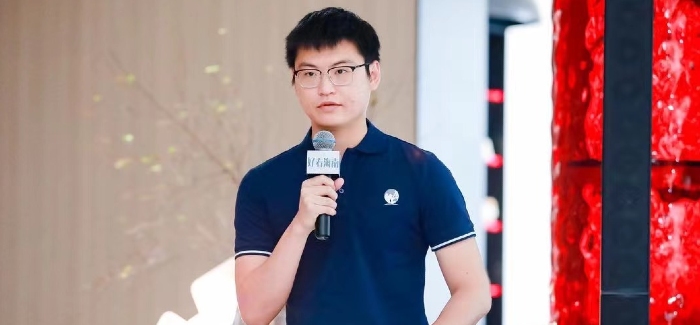Planning to study in the US, and keen to find work during or after your degree? Read on for guidance on US work visas for international students, graduates and other immigrants…
Practical training during or after your studies
International students in the US are permitted to work on-campus in the first year of their studies for up to 20 hours per week, and can apply for practical training from their second year. There are two types of practical training – optional (OPT) and curricular (CPT). Both can be completed either during your degree or after graduation, but must not exceed 12 months and must be in a role directly related to your field of study.
When you complete your degree, you’ll have a ‘grace period’ which gives you time to prepare for departure or apply for a new visa. If you intend to stay and seek work in the US, be sure to apply for a change in visa status as soon as possible.
The length of your grace period depends on which US student visa you have. Most international students are F-1 visa holders, and are allowed to stay for up to 60 days following the completion of their course. During this period F1-visa folders can apply for a change of visa status to stay in the country for one year to complete post-graduation practical training.
M-1 and J-1 visa holders can only remain in the country for an additional 30 days after completing their course. If you’re a student with an M-1 visa (for vocational courses) you can also take part in practical training, but can only do so after you have finished your studies.
If you’re a STEM (science, technology, engineering and mathematics) student, you might be eligible to extend your practical training period by an additional 24 months, meaning you can stay to work in the US on OPT for up to three years.
To apply for optional practical training, you should:
- Request the required forms from the international department of your university.
- Ask your designated school official (DSO) to endorse your Form I-20 and make the appropriate notation in the Student and Exchange Visitor Information System (SEVIS).
- Complete and file the Form I-765, Application for Employment Authorization with United States Citizenship and Immigration Services (USCIS), including the relevant fee and supporting documents.
- After the USCIS has approved your Form I-765, you will be sent Form I-766, “Employment Authorization Document” (EAD). You should only start work after receiving your EAD.
Applying for a US work visa after completing OPT
After your OPT period expires, a common way to continue working in the US is to apply for the H-1B visa. This is a non-immigrant US visa available for graduates with at least a bachelor’s degree or equivalent to work in a ‘specialty occupation’ requiring the theoretical or practical application of highly specialized knowledge. Roles in engineering, mathematics and business generally qualify as specialty occupations.
Co-ordinate with your potential sponsors as soon as possible, to ensure your application is submitted in good time. You should begin the application process in early March and submit your application on or shortly after 1 April.
There is an annual cap of 65,000 on the number of H-1B visas granted each year (20,000 for the advanced degree exemption cap, for applicants with a US-obtained master’s degree). Over 236,000 applications for the H-1B visa were received during the latest filing period, so a lottery is used to decide which applications are successful. If your H-1B visa petition is approved, it will not be valid until 1 October of the same year.
As long as your H-1B application is filed before your OPT expires, you can remain in the country while your H-1B petition is pending. Assuming the application is approved, you’ll be able to remain in F-1/OPT status until 1 October, when your immigration status will automatically change to H-1B. This automatic extension of OPT until October 1 is known as the ‘cap gap’.
Some employers are excused from the H-1B cap gap, such as universities, school districts, and hospitals which are associated with medical schools. These employers may file requests to sponsor a graduate for a working visa at any time of year, and the graduate can begin employment with H-1B status instantly upon approval.
If your H-1B application has been approved and you’ve received your Employment Authorization Document, you’re allowed to travel abroad and seek re-entry to the US with your original US F-1 visa status during the cap-gap period. However, you should not leave while your application is still pending.
Other non-immigrant US work visas
One alternative to the H-1B option is the O-1 visa, which is for those with extraordinary skill or ability in their field. You may require an employer sponsor, but in certain circumstances you can self-sponsor. The standard of exceptional ability required is extremely high, so most graduates will need several years of experience in their chosen field.
This US visa is available for graduates who are interested in running their own business. If you start or buy a business in the US and make a substantial financial investment in it, you might be able to obtain immigration status in order to run it. The required investment amount depends on the type of business. Investor visas are only available to citizens of selected treaty countries.
Obtaining permanent resident (‘green card’) status
If you’d like to live and work in the US as a permanent resident, you can apply for ‘green card’ status. This can be obtained in a number of ways, including via an offer of permanent employment, with approximately 140,000 employment-based immigration visas granted every fiscal year. The process will normally involve your employer acquiring a labor certification and then a Form I-140, Immigrant Petition for Alien Worker for you.
Obtaining the labor certification is often a difficult and lengthy process, designed to ensure that your employment “will not adversely affect the job opportunities, wages and working conditions of US workers” and that there are no US citizens in the area who are able, willing, qualified and available to accept the job opportunity.
Employment-based immigration visas are split into five categories:
1. Priority workers. You won’t need a labor certification or job offer if you fall in this category, which includes people with extraordinary ability in the sciences, arts, education, business or athletics. You'll need to provide “extensive documentation showing sustained national or international acclaim.”
2. Professionals holding advanced degrees and persons of exceptional ability. You will normally need a labor certification in this category (you may be eligible for waiver if your employment is for national interest), and you must have a job offer. Subgroups include professionals holding an advanced degree such as a master’s, plus five years of work experience, and people with exceptional ability in the sciences, arts or business.
3. Professionals with a bachelor’s degree or skilled workers whose job involves two years of education, experience or training, and other workers.
4. ‘Certain special immigrants’ who must be the recipient of an approved Petition for Amerasian, Widow(er), or Special Immigrant, Form I-360.
5. Immigrant investor visas. This category allows for two-year conditional residency for people who invest either $1 million (or $500,000 in underdeveloped areas or areas of high unemployment), which provides new jobs.
If you have no sponsoring employer, you might be able to self-petition for a green card, in which case you’ll need to prove you’re a person of extraordinary ability or have been granted a national interest waiver.
Want more content like this? Register for free site membership to get regular updates and your own personal content feed.












